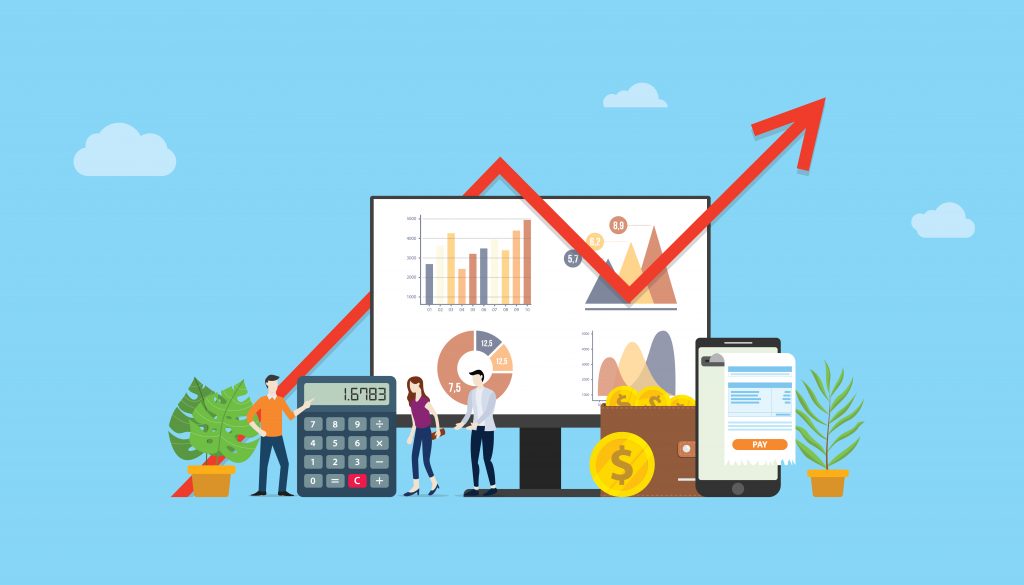4.1 Evaluation and Control
The process of evaluation and control ensures that a company achieves what it was proposed to carry out. Compare the performance with the desired results and provide the feedback needed for management to evaluate the results and take corrective action, as required.
This process is seen as a five-step feedback model:
Senior managers and operational managers need to specify the processes and implementation results that should be monitored and evaluated. The processes and results must be measured in a reasonably objective and consistent manner. The focus should be on the most important elements of a process, that is, those that justify the largest proportion of the expense or the greatest number of problems. Measures must be found for all important areas, regardless of the difficulty.
The standards used to measure performance are detailed expressions of strategic objectives. They are measures of acceptable performance results. Each standard generally includes a tolerance margin that defines acceptable deviations. The standards are established not only for the final result, but also for the intermediate stages of the production result.
Measurements must be made at predetermined times.
If the results of the actual performance are within the desired tolerance range, the measurement process stops.
If the actual results fall outside the desired tolerance margin, measures must be taken to correct the deviation and answer the following questions:
- Is the deviation just an occasional fluctuation?
- Are the processes being carried out incorrectly?
- Are the processes adequate for achieving the desired standards? Measures must be taken that not only correct the deviation, but also prevent it from happening again.
- Who is the best person to take corrective measures?
High-level administration is often better in the first two steps of the control model than in the last two. In addition, it usually establishes a control system and then delegates the implementation to others. This can produce unfortunate results.


Evolution, definition and importance of control
The theory of control is relatively new and is a product of the industrial revolution even when it was coined in France, now it is universal. The control is the result of the different administrative schools that over the years have been contributing to the creation of control theory. The systems approach has brought greater definition and understanding to the function and primary objective of the control until reaching the approach of the Japanese theorists with respect to total quality control.
The control function constitutes the phase of the administrative process that ensures the maintenance of the activities of the entire organization within permissible limits and in accordance with the expectations of the same. However, most controls are partial and focus on one facet of operations. In many organizations, a difficult problem is the development of general control, so that managers can check the progress or total performance of organizations or an integrated product or a territorial division.
Traditionally, most controls tend to be financial, since monetary or financial mediation is a natural basis of control, since the inputs and outputs of an organization are more easily expressed in the common denominator: money. Despite the traditional emphasis on financial controls, the most direct form of control is the certainty in the quality of the managers since many deviations would not occur if the organization were effectively managed.a
There is an administrative premise that states:
“Only what is measured can be improved”.

Without control, it is not possible to ensure and maintain a quality system, both in the products and services of companies and in the processes they use to produce them. Companies operate in changing environments and are highly sensitive to what happens externally, hence the plans, processes, structures and even the behavior of the members of the work team varies as they act. This forces companies to establish controls to know the degree of variability between what was planned and what is being achieved or achieved.

Importance of control
The control plays a relevant role in organizations, in the sense that it keeps them in the desired balance, both in terms of income, expenses, profits, production, quality of their products, etc. Every system requires balance so that it can work. The equilibrium of the systems is known as homeostasis, that is, maintaining a balance within the accepted variability. One of the reasons why control is required is because the best of the plans can be diverted. However, control also helps managers to monitor changes in the environment, as well as their repercussions on the progress of the organization.
Among other aspects, control is important to:
The administration of the total quality, leads to great improvements for the control. Process failures are detected and the process is corrected to eliminate errors. Employees have the power to inspect and improve their work. The management of total quality changes many of the attitudes and approaches to achieve effective control.
The change is an unavoidable part of any organization’s environment. Markets change, competitors offer attractive products and new services. More efficient materials and technologies are emerging, or government regulations are approved or amended. The function of control serves managers to respond to threats or opportunities of all this, because it helps them to detect the changes that are affecting the products and services of their organizations.
A competitive advantage in modern times where the speed of production is demanded is to add value to products or services. Often this added value takes the form of a quality above the average, achieved by applying control procedures.
The contemporary trend towards participatory management also increases the need to delegate authority and encourage employees to work together as a team. Thus, the process of control allows the manager to control the progress of the employees, without hindering their creativity or participation in the work.
In general terms, control is useful to avoid non-compliance, waste, unproductivity, losses, human errors or technical failures.
Types of control
The controls are set to concentrate on the actual performance results (output), the activities that generate the performance (performance) or the resources that are used to generate it (input).
Performance controls specify how something should be done through policies, rules, standard operating procedures and orders from a superior.

Exit controls specify what needs to be achieved by focusing on the end result of the behaviors through the use of goals and performance goals or important achievements.

Input controls specify resources, such as knowledge, skills, abilities, values and motives of employees.

The performance, output and input controls are not interchangeable. The former is more appropriate when the performance results are difficult to measure, but the cause-effect relationship between the activities and the results is clear. Exit controls are more appropriate when specific exit measures have been agreed, but the cause-effect relationship between the activities and the results is not clear. Input controls are more suitable when the output is difficult to measure and there is no clear cause-and-effect relationship between performance and performance. Corporations that apply the conglomerate diversification strategy tend to emphasize exit controls in their divisions and subsidiaries, while those that follow concentric diversification use the three types of controls. Although the three types of controls are used, one or two of them are more prominent, which depends on the circumstances.
